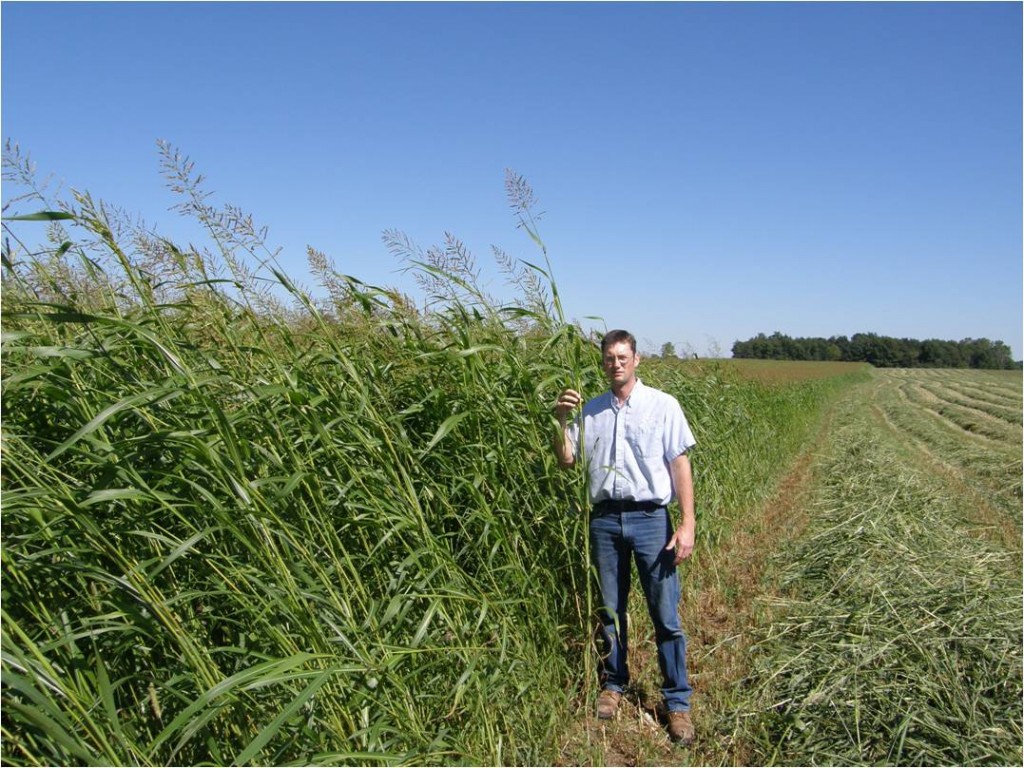Need Feed?

Harvesting cover crops for emergency fall forage may be able to play a major role in lessening the impact of the 2012 drought disaster for livestock producers. As I traveled from Indiana to eastern Iowa and through Wisconsin I saw dry ponds, cracked soil, nearly dead alfalfa, completely brown pastures, and an exceptionally poor corn crop.
I have received phone call after phone call from dairy and beef producers asking what cover crops they can use to provide food for their animals this fall and winter. Below I have listed a variety of choices that may work well for producers needing feed (if we get rain). By the way, these choices are also excellent cover crops.
Fall Forage Fast- Mechanically Harvested
Sudangrass or Sorghum X Sudangrass

Both of these would be choice 1-A and 1-B. However the producers in Texas have been experiencing drought for the past few years and seed supply is exceptionally tight. Choose BMR varieties if you can find them.
Spring Oats/Spring Triticale

This is not a “sexy” choice but it is a very good option. Oats sown in July and August will out-produce all of the winter cereal grains if a fall harvest is desired. I have worked with Ed Ballard from the University of Illinois and Gary Wilson from Ohio State University Extension for a number of years on summer seeding Oats and found great success almost every year.
Stan Smith from OSU Extension is a real believer in summer seeding oats as seen in this excellent article. Seed the Oats at 2 bu/acre and fertilize with 50+ Units of N or manure equivalent. Spring Triticale will behave very similarly to Oats when summer seeded.
Oats and Crimson Clover

I really like this mix because it will be higher quality than plain oats. Plant the oats in the grain box and the crimson clover in the small seed box. Plant the oats at 2 bu/acre and the crimson clover at 5-8#/acre.
Nathan Anderson of Cherokee, Iowa (NW Iowa) planted this mixture in 2011 and had very good success. While taking one cutting for hay and grazing 2 times in the fall/winter, he showed a profit of nearly $140/acre in beef production (weight gain) and hay produced.
Make sure that the crimson clover is inoculated and do not plant the crimson clover more than 1/2″ deep.
Oats and Cereal Rye (or Winter Triticale)

Harvest the oats in the fall and the cereal rye in the spring. I’d look at 2 bu/acre oats and 1 -1/2 bu/acre on the cereal winter rye or triticale. Consider adding 5-8# of Crimson clover to this mix as well.
Oats (or Spring Triticale) and Peas (Forage or Austrian Winter Peas)

Plant a 50/50 mix of this combination for high quality fall forage. Be sure to inoculate the peas. Plant this mix 1 1/2 -2″ deep for best success.
Annual Ryegrass/Annual Ryegrass – Crimson Clover Mix or Italian Ryegrass

Annual Ryegrass or Italian Ryegrass will not produce the tonnage that the spring cereal grains will. Ryegrass needs cooler temperatures, more moisture, and more fertility than the spring cereal grains need. The main benefit is that you can get a very high quality forage…just not a lot of it unless you have the moisture, cooler temps, and higher fertility. Maybe in the southern parts of the Midwest and further south this can be a good option. Italian Ryegrass will not grow as aggressively in the fall as Annual Ryegrass will.
Spring or Winter Barley
Barley is a multipurpose cover crop that can be beneficial to hog, dairy, and beef producers. It is a wonderful grain to use for feed and it is harvested for grain in June. The haylage would be harvested in May with plenty of time to plant corn silage or Sudangrass. Spring Barley planted in July/August will act like Oats and spring Triticale. Winter Barley will act more like cereal rye or winter Triticale. Plant 2 bu/acre for grain production and 3 bu/acre for forage production. Use less N than you would with Wheat or Ryegrass.

For grazing cover crops, brassica’s such as turnips or pasja work great for fall grazing. Very cold weather tolerant, exceptional quality. Mix well with oats/crimson clover/peas/AR.
That’s right Gene! Look for a post real soon on grazing cover crops. I appreciate you sharing!
Can I use a combination of Spring Oats and oilseed radishes planted now and take a crop of forage off for cattle in Oct/Nov if I round bale and wrap?
Marty, that may work pretty well. However, the radishes may have plenty of tuber above the soil then so harvest may be a bit challenging. Forage turnips like Appin or Pasja may be somewhat better options in this case. However, the radishes may possibly be a better at reducing compaction. Good luck! I’d be interested in hearing what you do and how it turns out.